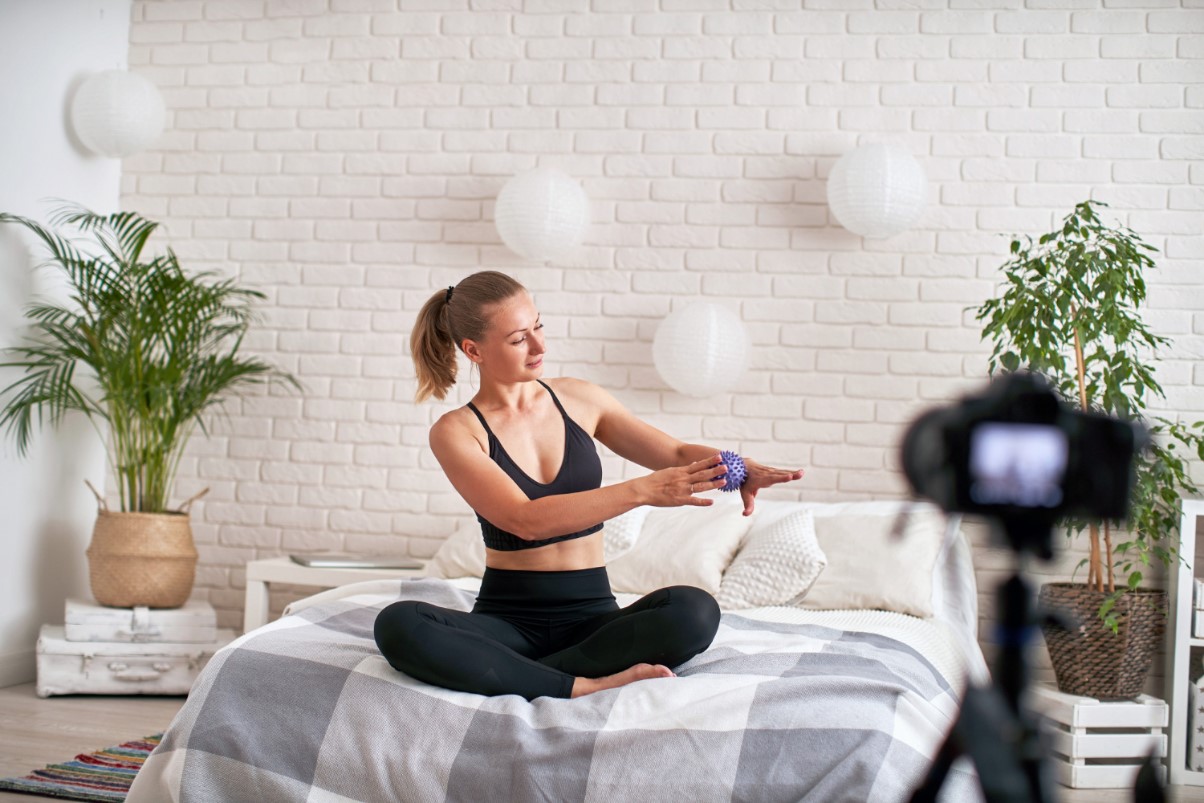
After the very popular rollers it is time for a ball massage. If until now you associate it only with a toy for children, after this article you will surely change your mind about it. A hard massage ball is the perfect way to relax your muscles. Check how to properly perform body massage with its help.
Physiotherapists recommend this type of self-massage especially for people who often train and take care of their bodies. This is an ideal way to get rid of the popular “sore muscles”, as well as joint problems. The hard ball is an inexpensive and effective tool for performing massage on the muscles of the back and legs. It is especially recommended for runners, who often suffer from muscle tension after training.
A few minutes massage helps to relax the muscles and also supports their regeneration, especially after a long physical effort.
Start the massage by applying 30 seconds of pressure and rolling the sore muscles. Try to direct the ball to the lymph nodes. Roll from the bottom up, or from the ankle up. Do not roll the ball over an area of bone or ligament. Choose areas where there are mainly muscles at first, especially if you are not experienced in this type of massage. With time, you can extend such massage sessions to about 2 minutes, but it is better to divide them into 2-3 series to give your muscles a rest.
The best method is to massage along the muscles, because performed across the muscle fibers may be too strong for you. Learn the anatomy and the course of the muscles beforehand so you know how to roll the ball correctly.
For runners and people training, for example, crossfit, a good method of massaging adhesions in the muscles is to focus on the so-called weak points, which are the Achilles tendon, the rear part of the calves or the adhesions of the biceps muscle of the thigh. Such massage can also be applied to the iliotibial band. Before you undertake firm compression with a rubber ball, use a roller, which has a global effect on the relaxation of a given part of the muscles, and then focus on applying pressure to specific problem areas.
Amassage with a rubber ball is much more thorough and also deeper, so prepare your muscles for this treatment beforehand
A massage across the muscle fiber is for people who have had this type of massage before. The purpose of this massage is to break up the fused fascia and increase blood supply to the tendon and muscle. After a more intensive massage in a direction lateral to the muscle, soreness in this area may persist for up to 72 hours. This method is more advanced because it is working on trigger points and muscle attachments. Before you start such manipulation, ask for advice from a physiotherapist who will show you how to perform massage with this technique
Massage should not be performed in: the popliteal fossa, the ulnar fossa, the inguinal fossa, and the groin. Avoid massaging the spine or areas with a high concentration of blood vessels. You should also stop the massage if you experience severe pain or numbness in the massaged area.
You may feel a slight pulling sensation during the massage, as well as a wrenching sensation and slight pain. This is a normal reaction of the muscles to the fact that you affect the tissue, stretching it and breaking adhesions that have formed during training, causing blockages in the joints. Your individual pain tolerance should not be exceeded. Initially, the massage should be done quite slowly. Check which parts of the muscles are more problematic and on them try a slightly stronger pressure with a ball.
Source of image: Designed by Freepik